Astra Space
Launchers and Propulsion
Astra Space Finalizes Plans for First Florida Launch
Astra Space Inc. is a launch vehicle company based in Alameda, CA (since 2016). - Astra will launch four NASA-sponsored CubeSats on its Rocket 3.3 vehicle as soon as 5 February 2022 on a mission that will be the first to use a streamlined set of commercial launch regulations. 1)
Astra announced Feb. 1 that it expected to launch its vehicle from Space Launch Complex 46 at Cape Canaveral Space Force Station in Florida on Feb. 5, pending receipt of a launch license from the Federal Aviation Administration’s Office of Commercial Space Transportation, which the company expects by Feb. 4. A three-hour launch window opens at 1 p.m. Eastern, with a backup launch opportunity Feb. 6.
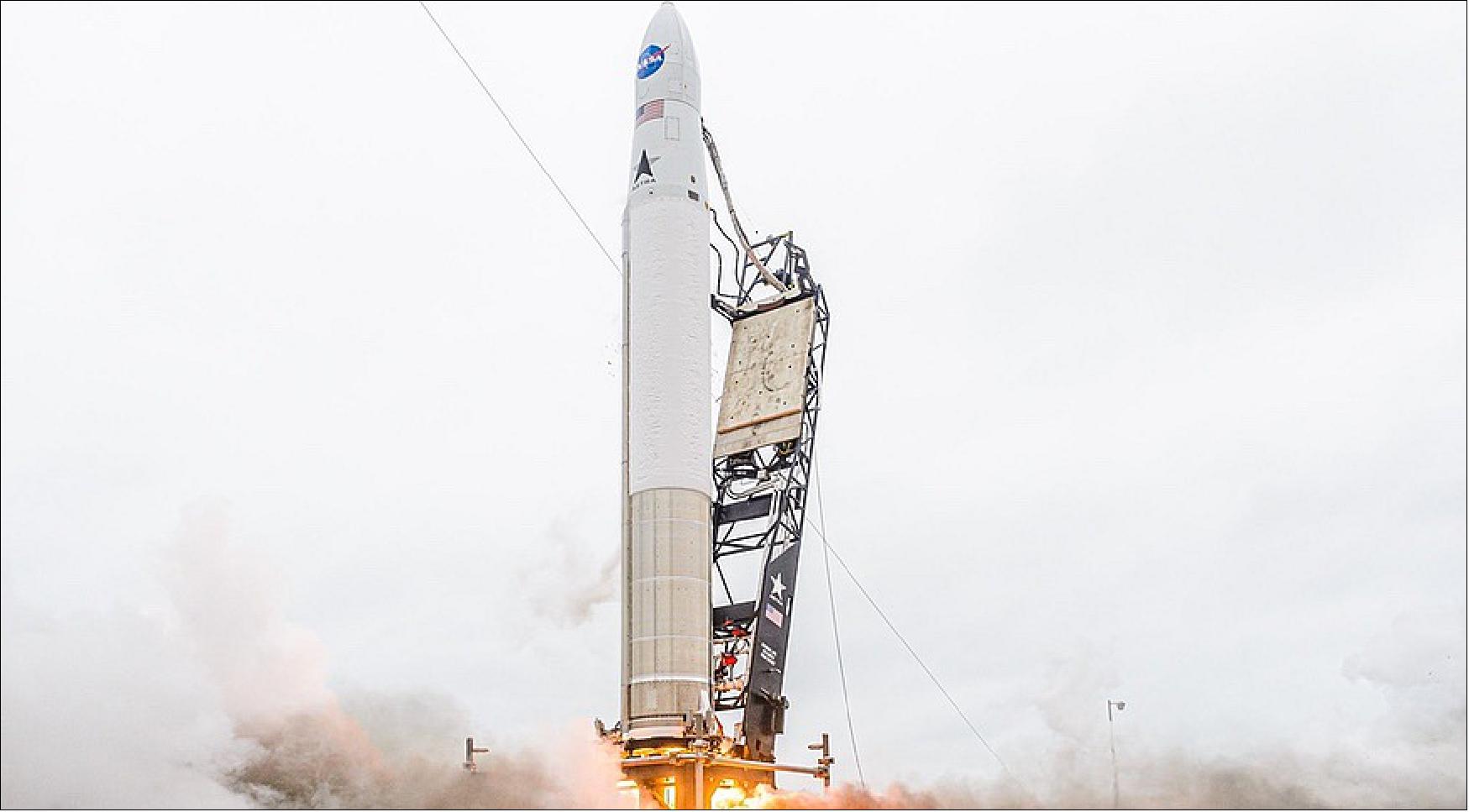
Astra announced Dec. 6 that its next launch would take place from Cape Canaveral after conducting previous launches from Pacific Spaceport Complex – Alaska on Kodiak Island. That included four orbital launch attempts, the most recent of which, Nov. 20, was the first to reach orbit.
This launch will be Astra’s first mission with an operational payload, a set of CubeSats on a mission called Educational Launch of Nanosatellites (ELaNa) 41 by NASA. The agency awarded Astra a $3.9 million contract in December 2020 for the launch through its Venture Class Launch Services (VCLS) Demo 2 competition.
“As the first VCLS mission to lift off from Florida’s Space Coast, this launch is ushering in new opportunities for CubeSat developers and small class launch vehicle providers,” said Hamilton Fernandez, mission manager supporting NASA’s Launch Services Program, in an agency statement. Launches under previous VCLS contracts took place from New Zealand on Rocket Lab’s Electron and off the California coast by Virgin Orbit’s air-launch LauncherOne system.
Three of the CubeSats on ELaNa 41 are from universities. BAMA-1, from the University of Alabama, will test a drag sail designed to rapidly deorbit the satellite. INCA, from New Mexico State University, will carry out measurements to improve space weather models. QubeSat, from the University of California Berkeley, will test how quantum gyroscopes operate in the space environment. A fourth satellite RS-51, is from NASA’s Johnson Space Center and will test a fast and cost-effective way to build CubeSats and demonstrate some in-space inspection technologies.
Astra says the launch will be the first licensed under what the FAA calls Part 450, a new set of streamlined commercial launch regulations finalized in October 2020 and which took effect in March 2021. Existing licenses based on earlier regulations were grandfathered in but will gradually transition to the new regulations over several years.
One key element of Part 450 is enabling a single license to cover launches of the same vehicle from multiple sites. Astra said that it took three months to obtain the license and that it expects the license to, “with planned modifications, make it easier for Astra to launch at a higher frequency out of more launch sites in the United States.”
Development Status
• May 7, 2022: Small launch vehicle developer AstraSpace says it is ready to perform a series of launches for NASA once it receives a license for those missions. 2)
- In a May 5 earnings call, Astra executives said they were ready to perform the first of three launches of its Rocket 3.3 vehicle from Cape Canaveral Space Force Station carrying CubeSats for NASA’s TROPICS (Time-Resolved Observations of Precipitation Structure and Storm Intensity with a Constellation of SmallSats) mission. The six satellites will be launched on three Rocket 3.3 vehicles over a relatively short period.
- “The rockets are ready,” Kelyn Brannon, chief financial officer of Astra, said during the call. “What we’re waiting on is the license for all the three launches, under one license.”
- In a separate blog post May 6, Donald Allen, senior director of program management-operations at Astra, said the company expected to receive the Federal Aviation Administration (FAA) launch license “in the next few weeks.” He did not state how soon after receiving the license he expected the first of the three launches to take place.
- Astra was also unusually critical of outside estimates of its launch plans. “There is a lot of speculation online about our launch dates and even websites that publish our supposed launch dates; these websites are not a reliable source of information as they do not have access to all of the data necessary to determine a launch date,” Allen wrote (emphasis in original.)
- While the company expects to perform the launches in quick succession from Space Launch Complex 46, which hosted an unsuccessful Rocket 3.3 launch in February, the company does not expect to complete all three launches by the end of the quarter.
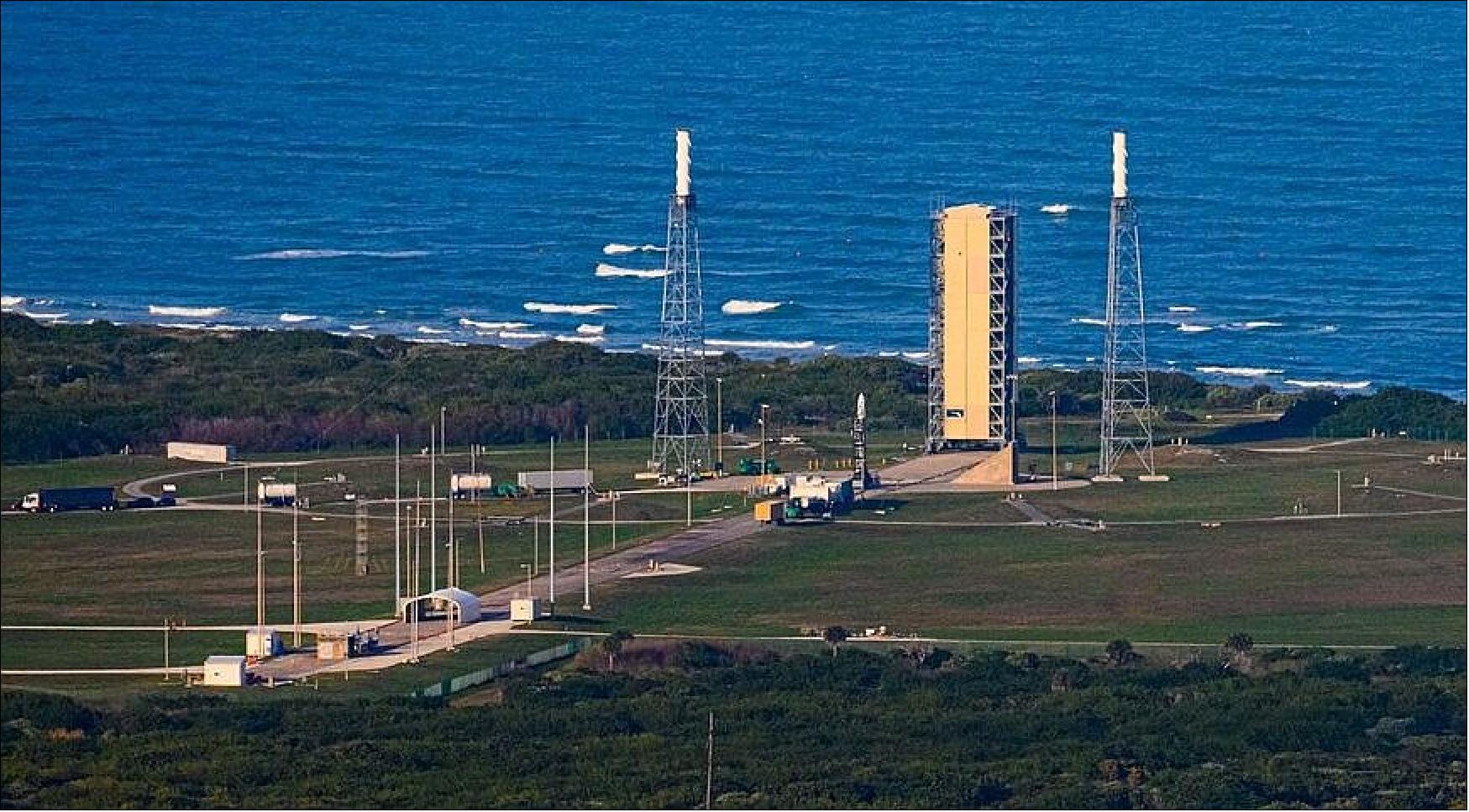
- “It’s going to be a pretty rapid cadence,” Chris Kemp, chief executive of Astra, said on the call, but added the company would have to work around weather and range constraints. “The objective is to start this campaign this quarter and get as many launches done this quarter as we can, but it is likely that we’re not going to be able to get them all done by the end of the quarter.”
- “This is a mission that we would like to complete before the storm season,” he added. He didn’t elaborate on “storm season,” but the Atlantic hurricane season, as defined by the National Weather Service’s National Hurricane Center, starts June 1, before the end of the quarter.
Financial Results
- Astra, in its first quarter, reported revenues of $3.9 million, a net loss of $85.7 million and an adjusted earnings before interest, taxes, depreciation and amortization (EBITDA) loss of $47.5 million.
- The company projected an even larger loss for the second quarter, with an adjusted EBITDA loss of $58 million to $64 million. The company ended the first quarter with $255.2 million in cash, cash equivalents and marketable securities.
- Brannon said the company projected a “meaningful increase” in expenses in the quarter because of investment in its next launch system, Rocket 4. Some of those upcoming expenses, such as materials and consulting services, will not continue at the same rate in later quarters.
- However, Kemp said the company completed its expansion of its factory, so that capital expenditures associated with that will decline “rather substantially” in the second quarter and beyond. “We’re getting to the end of deploying capital into the infrastructure and the factory,” he said.
- The company plans to show off those investments in its factory at a “Spacetech Day” May 12. Astra plans to use the event to also discuss its plans on Rocket 4 vehicle. “We’re going to make some exciting product announcements,” Kemp said.
Launch
An Astra launch of two NASA CubeSats to monitor tropical storms failed June 12, 2022 when the rocket’s upper stage shut down prematurely. 3)
- Astra’s Rocket 3.3 vehicle, designated LV0010, lifted off from Space Launch Complex 46 at Cape Canaveral Space Force Station in Florida at 1:43 p.m. EDT (17:43 UTC). The liftoff took place near the end of a two-hour window that opened at 12 p.m. EDT, after an initial launch attempt was stopped less than two minutes before liftoff because of an issue with the condition of the vehicle’s liquid oxygen propellant.
- The launch initially went according to plan, with the first stage firing for three minutes, followed by engine shutdown, deployment of the payload fairing, and stage separation. The upper stage engine ignited for a burn intended to last 5 minutes and 15 seconds, according to a mission timeline distributed by the company.
- However, about four minutes into that burn, video from the rocket briefly showed a plume from the engine, after which the vehicle appeared to tumble. The planned time of engine shutdown and deployment of the rocket’s payload of two CubeSats passed in silence.
- The company soon acknowledged a mission failure. “We had a nominal first stage flight. The upper stage shut down early and we did not deliver the payloads to orbit,” the company tweeted. “We have shared our regrets with NASA and the payload team. More information will be provided after we complete a full data review.”
- The failure is the second in three launch attempts for Astra this year. Another launch for NASA, also taking place from Cape Canaveral on Feb. 10, failed when the payload fairing failed to separate, a problem the company traced to a flaw in the wiring diagram for the separation system. The company returned to flight March 15, placing its first customer payloads into orbit on a launch from Kodiak Island, Alaska. The company has successfully reached orbit on only two of its first seven launches.
- This launch was the first of three for NASA’s Time-Resolved Observations of Precipitation structure and storm Intensity with a Constellation of Smallsats (TROPICS) constellation, a set of six three-unit CubeSats that carry microwave radiometers to measure temperature and precipitation in tropical storm systems. The full six-satellite constellation would have provided revisit times of less than an hour, allowing scientists to better track the formation of such storms, although the mission can still achieve its science goals with four satellites.
- The six TROPICS satellites would launch two at a time on three Astra rockets, each into different orbital planes. The preferred orbits of the mission — an altitude of 550 km and an inclination of 29.75 degrees — optimized the science they could produce but drove a dedicated launch solution rather than launching them as secondary payloads.
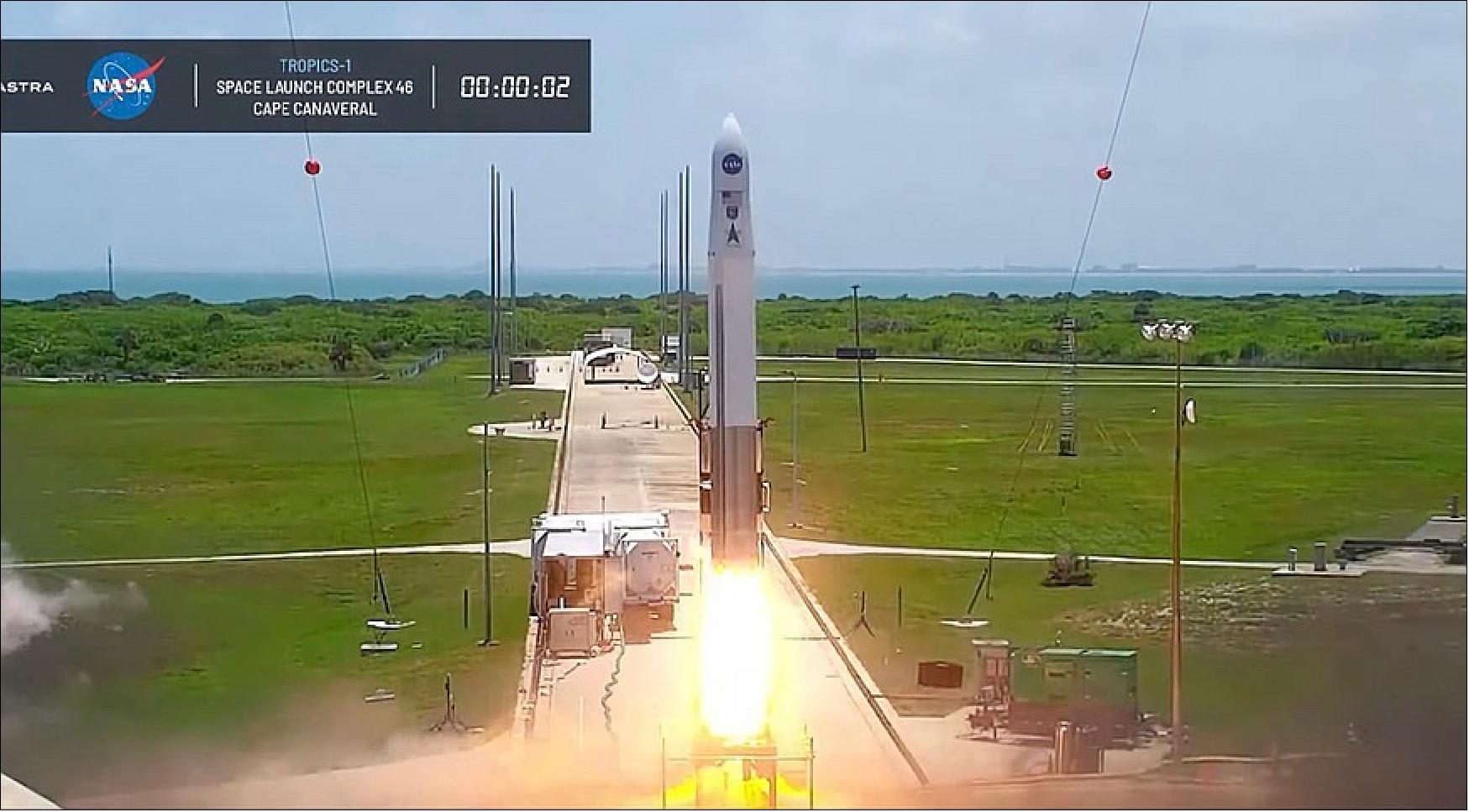
- “We need to go to a 30-degree inclined orbit and no one else really wants to go there. The rideshares are all going to sun-synchronous orbits or mid-inclinations, so it’s very well targeted to a smaller vehicle with a very targeted insertion where they can get us exactly where we want to go,” said William Blackwell, principal investigator for TROPICS at MIT Lincoln Laboratory, in a video about the mission.
- NASA acknowledged, though, that it was taking greater risk with this approach. It awarded Astra a contract valued at $7.95 million for the three launches in February 2021, before the company’s first successful launch.
- “Even though we are disappointed right now, we know: There is value in taking risks in our overall NASA Science portfolio because innovation is required for us to lead,” Thomas Zurbuchen, NASA associate administrator for science, tweeted after the launch failure.
- “I am confident that in the future we will succeed in using this valuable launch capability to explore the unknown and give others the same opportunity to inspire the world through discovery,” he added.
• June 12, 2022: While we are disappointed in the loss of the two TROPICS CubeSats, the mission is part of NASA’s Earth venture program, which provides opportunities for lower-cost, higher risk missions. Despite a loss of the first two of six satellites, the TROPICS constellation will still meet its science objectives with the four remaining CubeSats distributed in two orbits. With four satellites, TROPICS will still provide improved time-resolved observations of tropical cyclones compared to traditional observing methods. 4)
- TROPICS is an Earth venture mission - science-driven, competitively selected, low-cost missions that provide opportunity for investment in innovative Earth science to enhance our capability to better understand the current state of the Earth system and to enable continual improvement in the prediction of future changes.
- As the agency works with emerging launch providers for cost-effective launch capabilities to space, these types of missions are important to expand our scientific knowledge while fostering the U.S. commercial launch industry.
- As a Federal Aviation Administration (FAA) licensed mission, the FAA and Astra will lead the investigation to understand what happened during the TROPICS-1 launch. NASA will lend any expertise needed but would expect to pause the launch effort with Astra while an investigation is being conducted to ensure we move forward when ready.
- NASA’s Launch Services Program, which is managing the launch service for the mission, continues to work with emerging launch providers to deliver low-cost science missions into orbit with contracts that align with commercial practices, using less NASA oversight to achieve lower launch costs. Small satellites and Class D payloads tolerate relatively high risk and serve as an ideal platform for technical and architecture innovation, contributing to NASA’s science research and technology development.
- Thanks to the transparency displayed by Astra, NASA has been involved with the investigation on Astra’s previous launch. Additionally, we have been engaged in the discussions about lessons learned and corrective actions. We recognize the risks inherent in a new launch provider and will lend our assistance as needed.
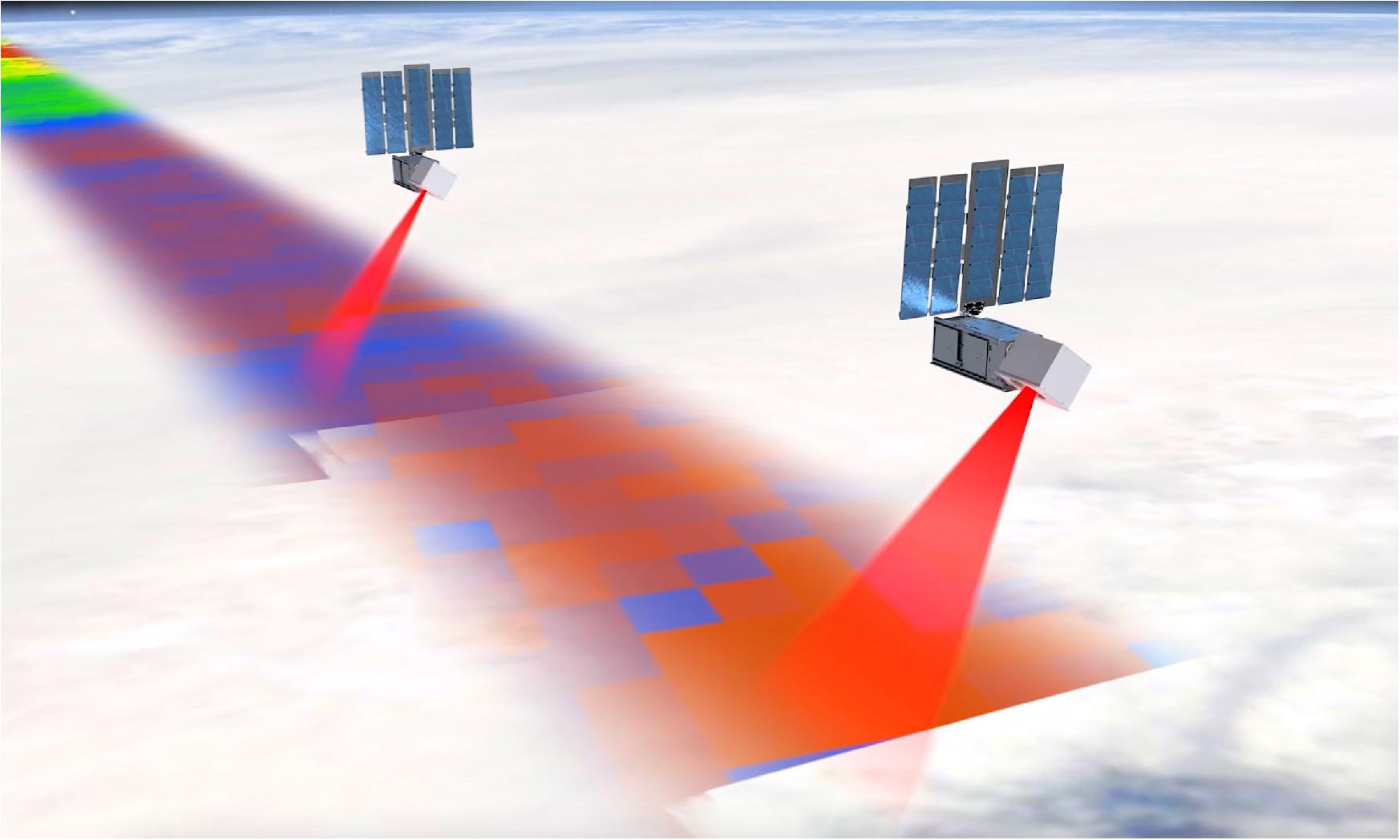
Astra successfully returned its Rocket 3.3 vehicle to flight March 15, 2022, placing several payloads into low Earth orbit. 5)
- The Rocket 3.3 vehicle, designated LV0009 by Astra, lifted off at 12:22 p.m. EST (16:22 UTC) from the Pacific Spaceport Complex – Alaska on Kodiak Island. The company scrubbed a launch attempt the previous day because of poor weather.
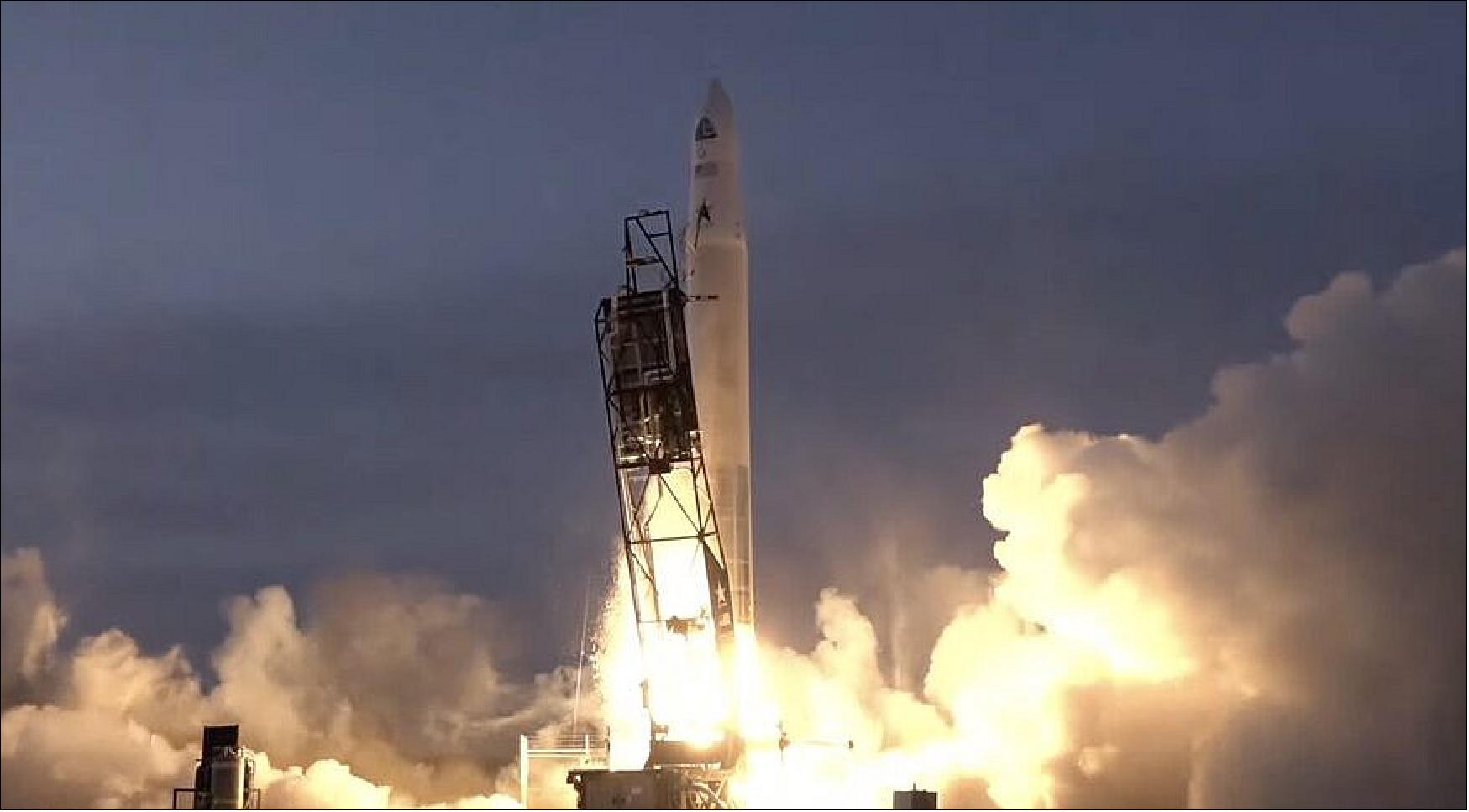
- The liftoff and ascent appeared to go as expected. That included the successful separation of the payload fairing after the first stage engines shut down and before separation of the second stage. On the previous Astra launch Feb. 10, a flawed design in the wiring for the payload fairing separation system prevented one mechanism from firing, keeping the fairing from separating as planned.
- The second stage engine shut down about eight minutes and 35 seconds after liftoff. Payload separation was scheduled to take place 10 seconds later, but there was no immediate confirmation that the payloads were released.
- A little more than an hour after liftoff, though, Astra Chief Executive Chris Kemp said the payloads were communicating with ground stations, confirming successful separation. “The flight was nominal,” he said on a company webcast. “We were able to precisely deliver to the targeted orbit and inclination at orbital velocity.” Astra said before the launch the vehicle would deliver the payloads to a sun-synchronous orbit at an altitude of 525 km.
- The mission, the first in a multilaunch agreement Astra announced with launch services provider Spaceflight March 14, carried payloads for three customers. One payload, called EyeStar-S4 and developed by NearSpace Launch, was designed to remain attached to the second stage to test intersatellite communications technologies the company plans to use on future satellites.
- A second payload was OreSat0, a CubeSat developed by a student group, the Portland State Aerospace Society. Spaceflight previously planned to launch OreSat0 on one of its Sherpa tugs manifested on the SpaceX Transporter-3 rideshare mission in January, but a propellant leak on the Sherpa forced the company to remove the vehicle from that launch and find other rides for OreSat0 and the other satellites it was to deploy. A third customer, not identified by either Astra or Spaceflight, also had one or more payloads on board.
- The launch was the first since the February launch failure from Cape Canaveral that carried four NASA and university CubeSats on a launch arranged by NASA’s Venture Class Launch Services program. The subsequent investigation turned up both the payload fairing wiring problem as well as a software glitch with the thrust vector control system on the second stage.
- “The team worked really hard — every day, every weekend, many nights — to quickly identify the issues that we had on the flight, get another rocket back up to Kodiak, and fly it,” Kemp said on the webcast.
- Kemp previously said that the next three launches Astra has planned will take place from Florida, carrying CubeSats for NASA’s Time-Resolved Observations of Precipitation structure and storm Intensity with a Constellation of Smallsats (TROPICS) Earth science mission. Those launches are scheduled for this spring.
- Despite the successful launch, Astra was not rewarded on the stock market. Shares in Astra were volatile in trading March 13, soaring briefly after liftoff only to sharply plummet during the nearly one hour with no updates regarding payload separation. The stock rebounded when Kemp announced successful payload deployment, but shared closed for the day down nearly 0.6% at $3.49.
- Edison Yu, a research analyst at Deutsche Bank, said in a note after the launch that the success of this mission alone was not sufficient. “We think this will help sentiment on the stock but the company likely needs to put together a string of successful launches for a meaningful re-rating,” he wrote.
The first operational launch of Astra’s Rocket 3.3 vehicle failed Feb. 10, 2022 when the rocket’s upper stage appeared to tumble out of control after stage separation. 6)
- The rocket, designated LV0008 by Astra, lifted off from Space Launch Complex 46 at Cape Canaveral Space Force Station at 3 p.m. EST (20:00 UTC). The launch suffered several days of delays because of a range issue as well as a last-second scrub during the previous launch attempt Feb. 7.
- However, onboard video of the vehicle showed the upper stage tumbling shortly after separation from the first stage, three minutes after liftoff. The video suggests a potential issue with the separation of the payload fairing, which, according to a mission timeline provided by the company, takes place seconds before stage separation.
- “An issue has been experienced during flight that prevented the delivery of our customer payloads to orbit today. We are deeply sorry to our customers,” said Carolina Grossman, director of product management at Astra, during the launch webcast. The company did not disclose any additional information about the failure.
- “I’m with the team looking at data, and we will provide more info as soon as we can,” Chris Kemp, chief executive of Astra, tweeted minutes after the failure.
- This was the fifth orbital launch attempt by Astra of its Rocket 3 vehicle. The first three launches, from September 2020 through August 2021, all failed to reach orbit. The fourth, in November 2021, did reach orbit but did not carry a satellite payload.
- This launch was carrying four NASA-sponsored CubeSats on a mission called Educational Launch of Nanosatellites (ELaNa) 41 by NASA. The agency awarded Astra a $3.9 million contract in December 2020 for the launch through its Venture Class Launch Services (VCLS) Demo 2 competition.
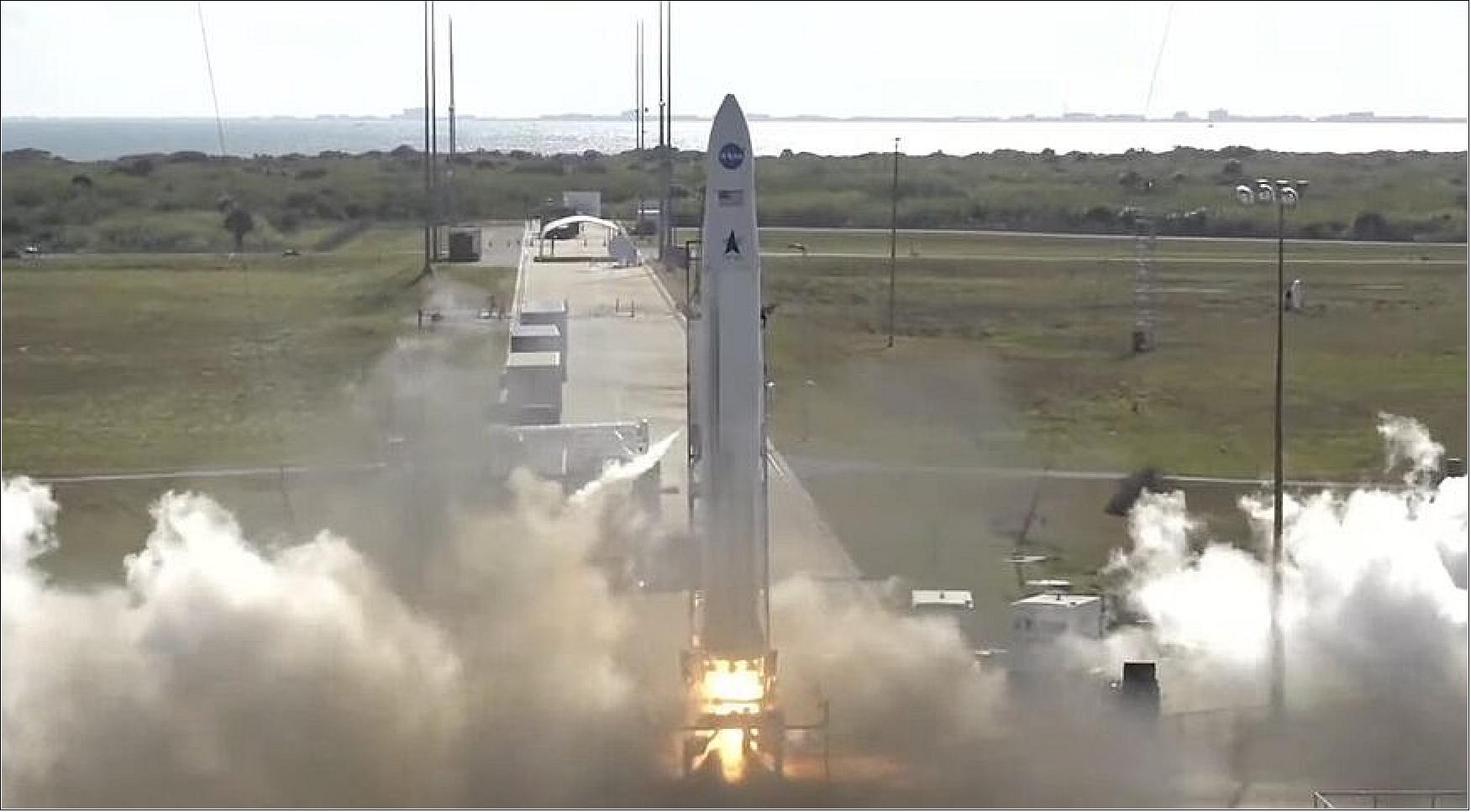
• February 7, 2022: Astra Space aborted and then scrubbed a launch of its Rocket 3.3 small launch vehicle Feb. 7 seconds before liftoff. 7)
After a delay of 50 minutes to assess upper-level winds, Astra counted down to a launch of the Rocket 3.3 vehicle, designated LV0008, at 1:50 p.m. EST but aborted just as the engines started up. The company took nearly 90 minutes to investigate the issue before announcing it was scrubbing the launch for the day.
The company said the launch was postponed because of a “minor telemetry issue” but didn’t elaborate. “We are giving the team time to complete a thorough review and will provide an update on the next launch opportunity,” the company tweeted. Weather is unfavorable for a Feb. 8 launch, with only a 20% chance of acceptable weather during a three-hour window.
Astra scrubbed an initial launch attempt Feb. 5 because of what Chris Kemp, the company’s chief executive, called “a range equipment failure causing a critical range detection asset to be unavailable to support our launch.” While the vehicle has an autonomous flight safety system, he tweeted that system used software developed by NASA but not yet certified, so the range needs two radar systems.
Space Launch Delta 45, which operates the Eastern Range, later said it has “isolated” the problem with the radar and was working on a solution. Astra called off a Feb. 6 launch opportunity.
This is the fifth orbital launch attempt by Astra, but the first to carry a satellite payload. The first three launches, from Pacific Spaceport Complex – Alaska on Kodiak Island, failed to reach orbit between September 2020 and August 2021. The fourth, Nov. 20 and also from Alaska, did reach orbit but did not carry satellites. The U.S. Space Force flew instrumentation on that mission to collect data about the launch environment.
This launch is carrying four NASA-sponsored CubeSats on a mission called Educational Launch of Nanosatellites (ELaNa) 41 by NASA. The agency awarded Astra a $3.9 million contract in December 2020 for the launch through its Venture Class Launch Services (VCLS) Demo 2 competition.
Three of the CubeSats on ELaNa 41 are from universities. BAMA-1, from the University of Alabama, will test a drag sail designed to rapidly deorbit the satellite. INCA, from New Mexico State University, will carry out measurements to improve space weather models. QubeSat, from the University of California Berkeley, will test how quantum gyroscopes operate in the space environment. A fourth satellite, RS-51, is from NASA’s Johnson Space Center and will test a fast and cost-effective way to build CubeSats and demonstrate some in-space inspection technologies.
Astra received a license from the Federal Aviation Administration Feb. 4 for this launch. The license was the first issued by the agency under streamlined regulations called Part 450. Those regulations, which took effect last March, are intended to make it easier for companies to obtain licenses and to make those licenses more flexible.
Part of that flexibility includes allowing companies to use the same license for launching vehicles at different sites. Previously, companies had to obtain individual licenses for each site they planned to launch a vehicle from.
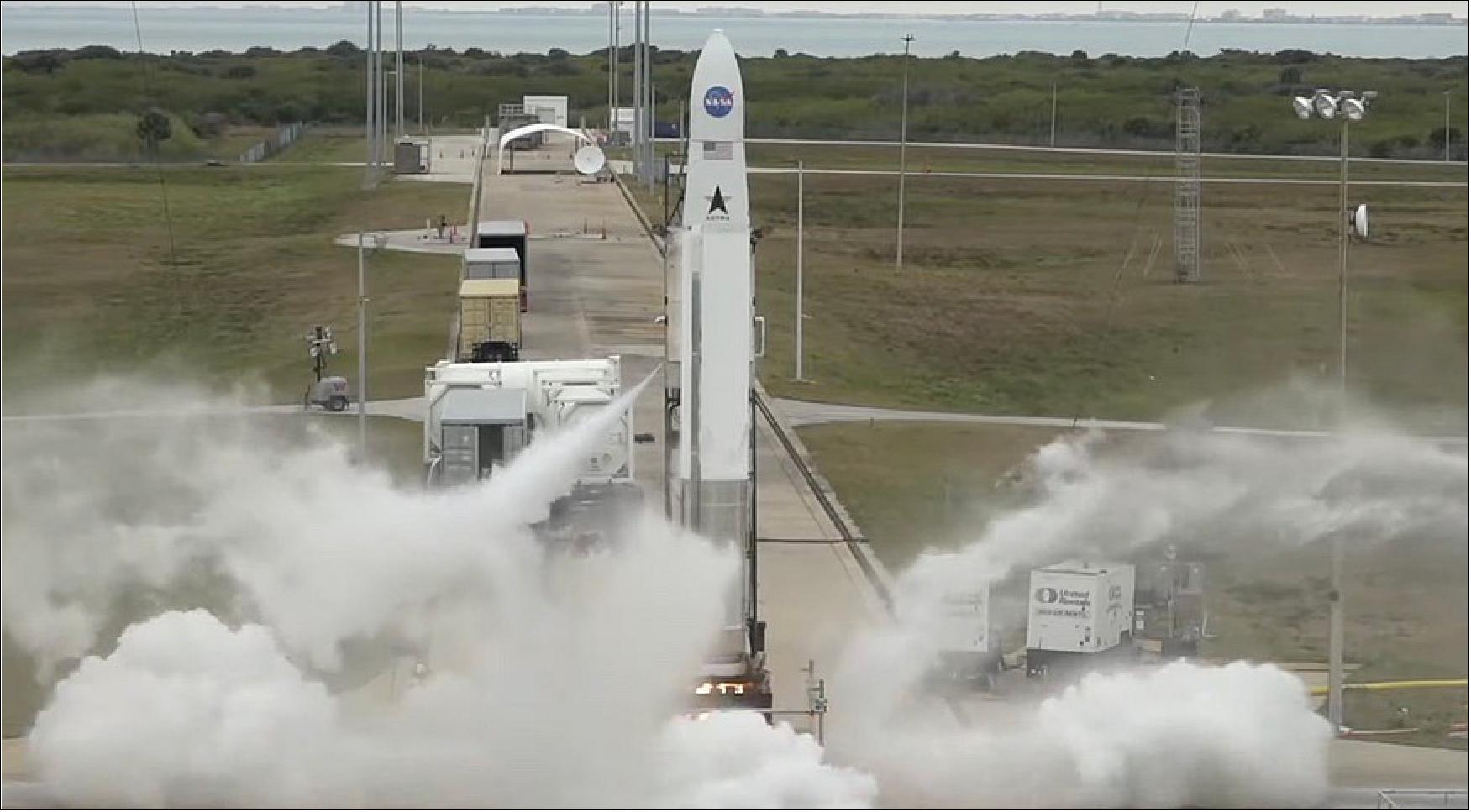
- “Astra is proud to be the first company to receive a Part 450 license, and we plan to continue leveraging the full potential of Part 450’s flexibility,” Tom Marotta, principal launch licensing manager at Astra, said in a Feb. 4 statement. “Our existing license can be modified to add more launch sites, along with new launch vehicles.”
- Licenses granted prior to Part 450 taking effect remain valid, including a license Astra has for Rocket 3 launches from Alaska, and will gradually transfer to the Part 450 regulations.
References
1) Jeff Foust, ”Astra finalizes plans for first Florida launch,” SpaceNews, 1 February 2022, URL: https://spacenews.com/astra-finalizes-plans-for-first-florida-launch/
2) Jeff Foust, ”Astra prepares for TROPICS launch campaign,” SpaceNews, 7 May 2022, URL: https://spacenews.com/astra-prepares-for-tropics-launch-campaign/
3) Jeff Foust, ”Astra launch of NASA TROPICS cubesats fails,” SpaceNews, 12 June 2022, URL: https://spacenews.com/astra-launch-of-nasa-tropics-cubesats-fails/
4) Tylar Greene, ”Update on NASA's TROPICS-1 Mission,” NASA Feature, 12 July 2022, URL: https://www.nasa.gov/feature/update-on-nasas-tropics-1-mission
5) Jeff Foust, ”Astra’s Rocket 3.3 returns to flight with successful launch,” SpaceNews, 15 March 2022, URL: https://spacenews.com/astras-rocket-3-3-returns-to-flight-with-successful-launch/
6) Jeff Foust, ”Astra launch of NASA-sponsored CubeSats fails,” SpaceNews, 10 February, 2022, URL: https://spacenews.com/astra-launch-of-nasa-sponsored-cubesats-fails/
7) Jeff Foust, ”Astra aborts launch attempt,” SpaceNews, 7 February 2022, URL: https://spacenews.com/astra-aborts-launch-attempt/
The information compiled and edited in this article was provided by Herbert J. Kramer from his documentation of: ”Observation of the Earth and Its Environment: Survey of Missions and Sensors” (Springer Verlag) as well as many other sources after the publication of the 4th edition in 2002. - Comments and corrections to this article are always welcome for further updates (eoportal@symbios.space).